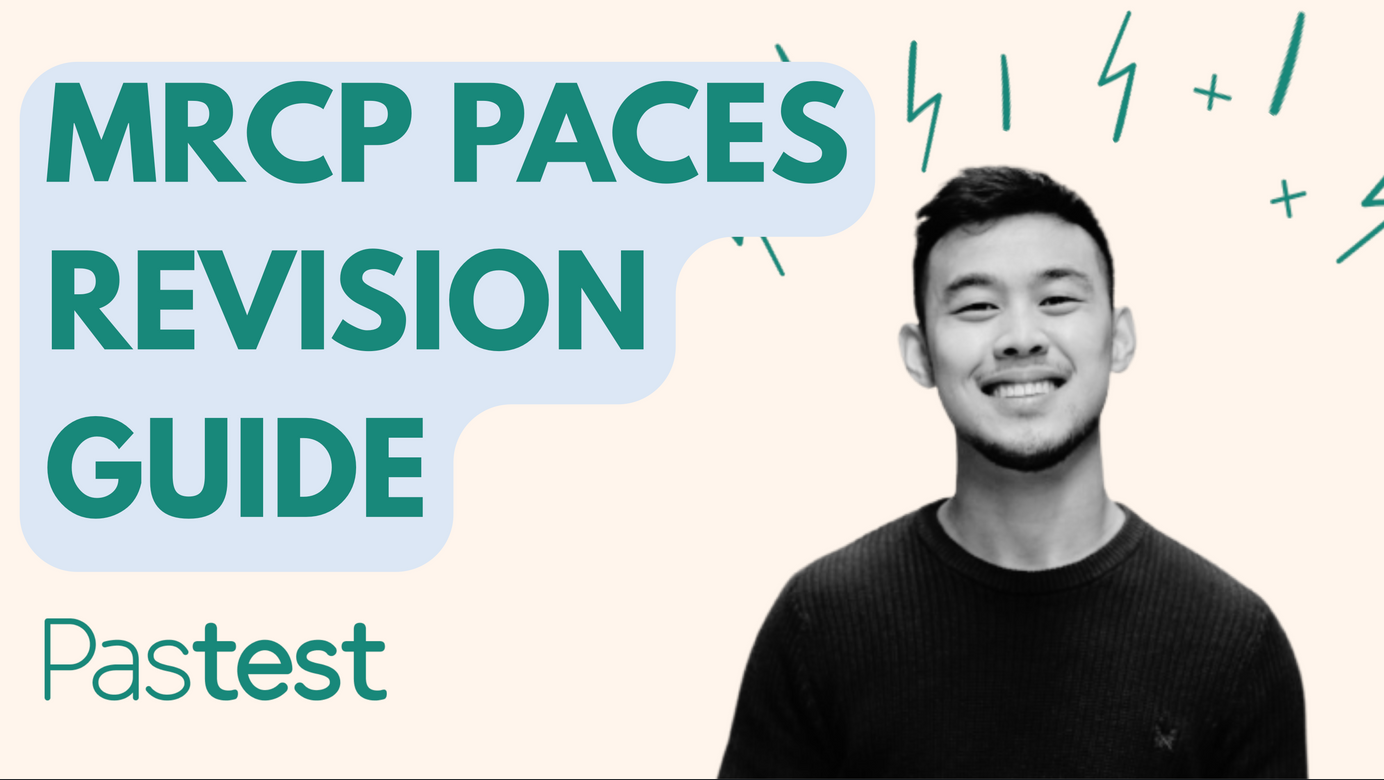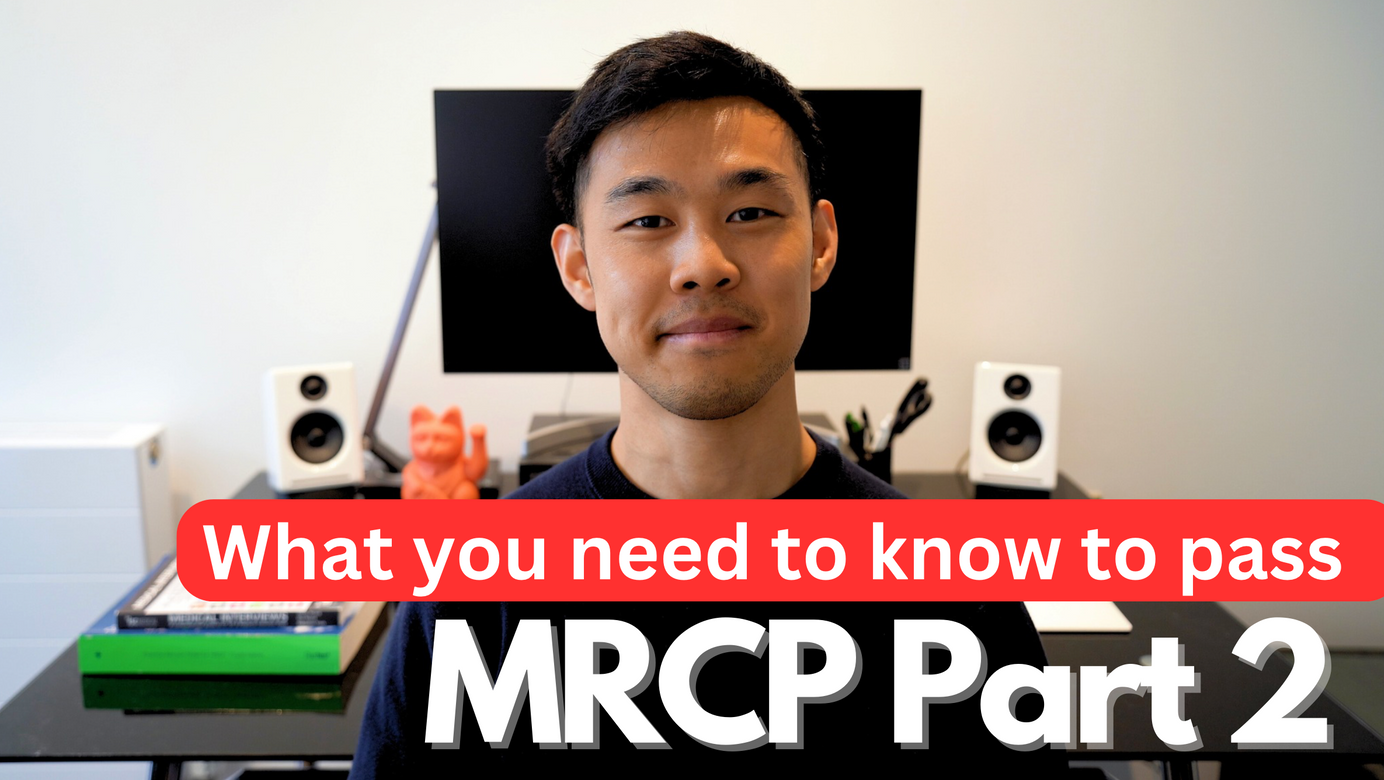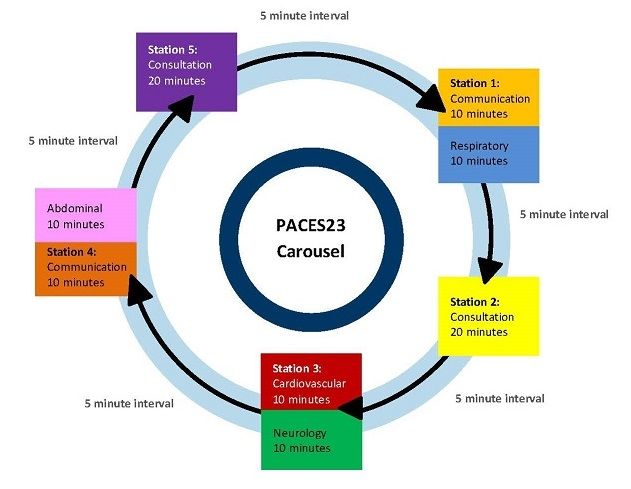
An Introduction to MRCP PACES
🚀 I've just released my MRCP PACES Strategy and revision guide with Pastest, which takes you through revision timelines, key skills, station-specific strategies, flashcards, and so much more! To read more, click here.
The MRCP PACES examination stands as a pivotal milestone for physicians aspiring to demonstrate their clinical proficiency. Developed by the Royal College of Physicians of the United Kingdom, PACES—Practical Assessment of Clinical Examination Skills—is a comprehensive assessment designed to evaluate candidates' clinical acumen, communication skills, and ability to navigate through the complexities of medical consultations. In the era of modern medicine where physicians have access to advanced diagnostic tools such as cross-sectional imaging and blood tests, PACES puts clinical acumen at the forefront, assessing your ability to learn and form diagnoses from examining patients.
Success in the MRCP PACES examination requires thorough revision of clinical skills, practice in simulated environments, and a strong understanding of relevant medical guidance and ethics. It is undoubtedly a challenging exam, with an approximately 50% pass rate globally, and lives up to its reputation in its rigour and difficulty. It can feel overwhelming to prepare for when you think about the wide range of conditions that each specialty system includes, and the myriad knowledge needed to satisfy the examiners' questions.
However, with diligent preparation, it is possible to maximise your chance of passing the exam.
I passed MRCP PACES in 2024 with a total score of 93.4%. Since 2020, I've created revision guides to help thousands of candidates pass their MRCP exams, and I'm excited to continue this with the PACES exam. Through speaking to hundreds of successful candidates and going through every resource available, I've narrowed down the core skills you need to pass the exam, and designed a comprehensive guide to give prospective candidates the best chance of success. Here, I'll go into how the exam format works, and key domains you need to pass.
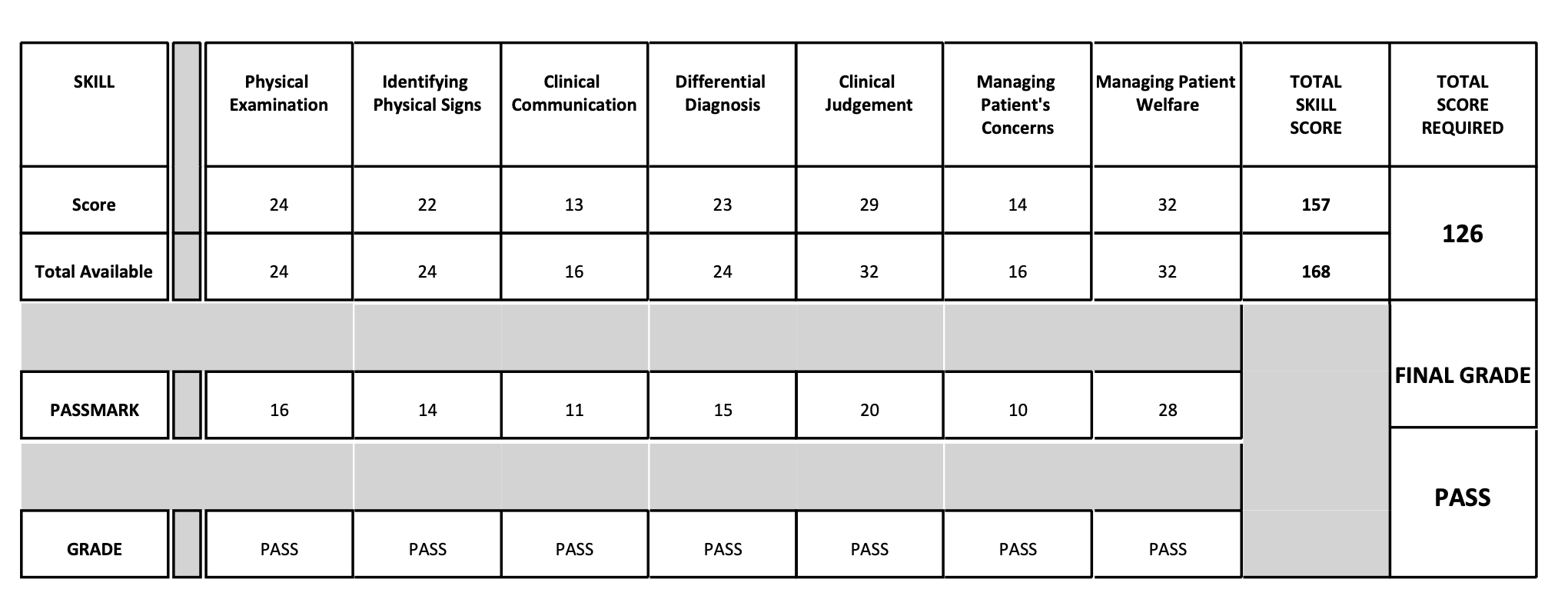
Exam Format
Comprised of five stations, each meticulously crafted to evaluate specific aspects of clinical competency, MRCP PACES challenges candidates to navigate a series of simulated patient encounters and clinical scenarios. The types of scenarios in the stations include:
1. Clinical Examination (Station 1,3,4): Candidates are tasked with conducting a thorough examination of a patient. There are four key stations: cardiovascular, abdominal, respiratory, and neurological examination. This station assesses candidates' ability to perform a systematic physical examination, recognise key clinical signs of relevant disorders, present a coherent summary of findings, and formulate appropriate differential diagnoses. Candidates have 6 minutes to complete their examination, followed by 4 minutes to present their key findings with a subsequent viva.
2. Communication Skills (Station 1,4): This station assesses candidates' communication abilities, ethical understanding, and professionalism. Candidates engage in role-play scenarios, demonstrating effective communication skills, empathy, and sensitivity to patients' concerns. Ethical dilemmas may also be presented, requiring candidates to navigate complex ethical issues with clarity and integrity. Common scenarios that come up here include breaking bad news, managing patient concerns, facilitating complaints, and discussing management plans. Candidates will have 10 minutes to discuss to do this, and there is no viva.
3. Clinical Consultation (Station 2, 5): In these two stations, candidates must navigate through a presenting complaint. Candidates must integrate their clinical knowledge, examination findings, and communication skills to provide comprehensive patient care and management plans. Candidates will have 15 minutes to take a full history, complete their examination, and then discuss management options and patient concerns. This will be followed by a 5-minute viva.
The carousel for the exam is as follows:
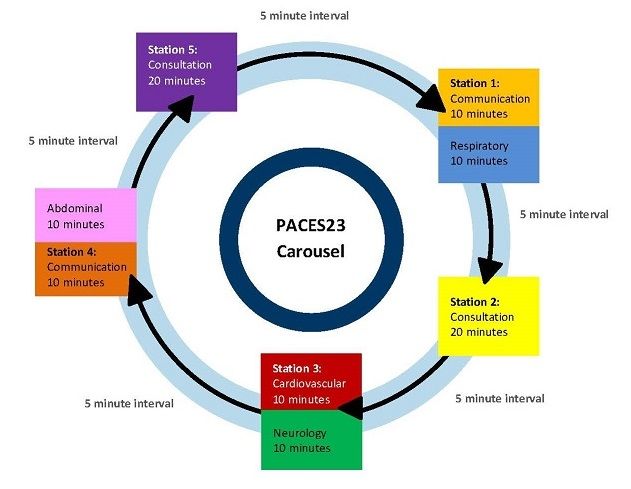
How does PACES differ from Part 1 and 2?
Unlike the written MRCP exams, which primarily assess theoretical knowledge and assessed through multiple choice questions, MRCP PACES focuses on evaluating candidates' clinical skills, communication abilities, and holistic understanding through practical assessments. It emphasises hands-on clinical examination, history taking, communication skills, and ethical decision-making in simulated patient encounters.
How is the exam marked?
The exam is graded on seven skills:
- Physical Examination
- Identifying Physical Signs
- Clinical Communication
- Differential Diagnosis
- Clinical Judgement
- Managing Patients' Concerns
- Maintaining Patient Welfare
In order to pass MRCP PACES, you must:
1. Achieve the minimum pass mark of 126
2. Pass each of the seven assessed clinical skills
How to revise for MRCP PACES
It can be hard to know where to start revising for MRCP PACES. It's unlike any postgraduate you've sat before, with what appears to be a broad scope.
The first thing to recognise is that just revising through multiple choice questions, textbooks, and online revision banks will not be enough. This will have worked for Part 1 and 2, but the focus of PACES is on clinical acumen and patient examination, meaning your approach needs to be different. The fundamentals of what you need to know about each condition are the same, and in fact it's likely that you already have 70-80% of the knowledge needed for the exam stored in your head. However, the focus of PACES is slightly different.
Because of how different the exam is, the study strategy you employ is critical to your success. This means planning out the resources you use, how you focus your time in and out of the hospital, and what skills you focus on developing (whilst ensuring your revision remains high-yield). The risk is that so much of what you can do isn't helpful. If you ask any previous candidate, they will tell you stories about how much time they've wasted looking for suitable patients, going onto the wards to ask teams for good examinations. Scourging through specialty team lists, just to arrive by the bedside for the patient not to be there, or to be turned away because they've had several people examine them today already. Conversely, watching videos at home can be very passive and you can spend hours without having anything sink in!
Therefore, it's important to be intentional with your time, and prepared for the time you allocate to revision.
This exam aims to assess:
- Your ability to identify and interpret clinical signs
- How you contextualise these signs to form a diagnosis
- Developing a management plan and list of relevant investigations
- Communication skills
- Understanding of ethical issues
- Patient empathy and building a rapport
Therefore, your revision should cover these 6 skills.
In terms of how long you should study, there is no hard and fast rule. Nor is there a set amount of time that you can study to definitively pass. Generally, candidates take between 2-6 months to study for the sitting. The average for UK trainees is 3 months. It also depends entirely on the time you have available to study - whether you have leave available to study, or if you are squeezing in 1-2 hours after work a few times a week.
However, I would urge you not to only measure the amount of revision you have done/are planning to do by hours as you then risk falling into the trap of falsely inflating the amount of studying you have done. Instead, measure it by the amount of clinical exposure number of patients examined.
What materials should I use for revision?
There are a wide range of revision materials dedicated towards the MRCP PACES examination, ranging from consumable resources like books and podcasts, to in-person courses. It's important to choose the ones that are most aligned to your revision style.
The core materials include:
- Textbooks
- Online video banks (e.g. Pastest)
- In-person courses
- Podcasts
Of course, nothing replaces examining real patients in hospital. This is essential to master your examination technique and becoming confident in identifying clinical signs. Remember that you will have patients with real pathologies in your exam, so it is crucial that you are exposed to a wide range of medical conditions, in addition to developing a comfortable bedside manner.
You should try to examine as many patients as possible.
Where Do I Begin?
Because of how different MRCP PACES is as an exam to Part 1 and 2, revision is much harder.
First, people tell you what to study, but no one teaches you how. Revision strategy is highly variable, and revision time can be low yield. Materials are scattered across different websites and resources, and hard to put together. When going into each examination station, it’s easy to be overwhelmed by the stress and scenarios.
Second, looking for patients on the wards can be unrewarding and low-yield as many of them may be too ill, refuse, or not have good clinical signs.
Third, it's not entirely clear WHAT you should be studying towards. There's no fixed syllabus for PACES; we know the stations but not exactly what might come up, or what is expected of us!
If you feel overwhelmed, you're not alone. I, alongside so many colleagues, was left entirely stumped. It wasn't without much hardship and speaking widely to many different people, that I finally understood the expectations and what was needed to pass.
After completing my exam, I set out to change things for the better. I decided to create a revision course that teaches you HOW to study, and what you need to know. I wanted to have all the key bits of information in one easily accessible place, and outline the key skills needed to pass each station. This way, doctors are able to revise more effectively whilst ensuring that they know exactly what to expect.
In other words, it's what I wish I could've had when I first set off on my MRCP PACES journey. And I'm so excited to be able to share this with you all.
To learn more about the course, click here.
MRCP exam revision materials straight to your inbox.
Sign up to the mailing list to be the first to receive tips and tricks to pass your exams.


